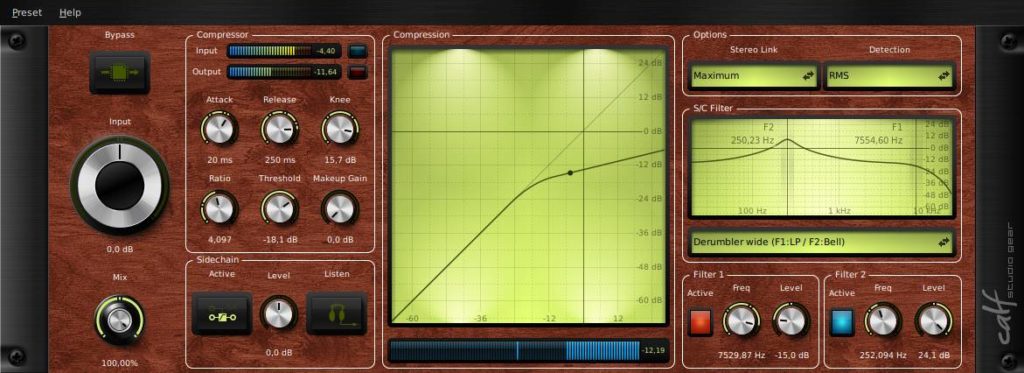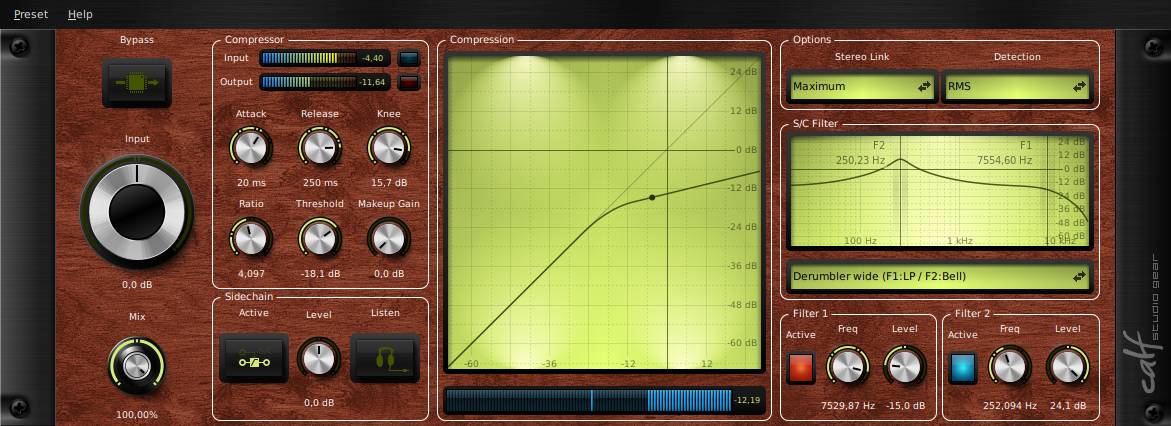Sidechaining is an audio production technique used in music, sound design, and audio engineering to control the volume or effect of one sound source (typically referred to as the “source” or “trigger”) based on the level of another sound source (referred to as the “destination” or “ducked” signal). It’s commonly used to achieve dynamic and rhythmic effects in music and audio production.

What is Sidechaining?
Sidechaining is often associated with compressors and effects like gates and expanders. Here’s how it works:
- Compression and Sidechaining:
- In the context of sidechaining, a compressor is a common tool. Compressors reduce the dynamic range of an audio signal. They attenuate (reduce the volume of) the signal when it exceeds a certain threshold.
- Routing:
- To set up sidechaining, you route the source signal (e.g., a kick drum or a synth pad) to control the compressor on the destination track (e.g., a bassline or a vocal track).
- Triggering:
- When the source signal reaches a certain volume level (as defined by the threshold), it triggers the compressor on the destination track.
- Ducking:
- The compressor then reduces the volume of the destination signal (e.g., the bassline or vocals) when the source signal is active. This creates a “ducking” effect, where the destination signal’s volume is lowered to make room for the source signal.
- Release and Ratio:
- Compressors have additional parameters like “release” and “ratio” that control how quickly the compression effect fades out and by how much the signal is attenuated, respectively. Adjusting these settings allows for fine-tuning the sidechain effect.
Common Applications of Sidechaining:
- Pumping Effect: Sidechaining is often used in electronic dance music (EDM) to create the classic “pumping” effect. In this case, the source signal is typically a kick drum, and the bassline or other instruments are sidechained to the kick’s rhythm, creating a rhythmic and dynamic effect.
- Voiceover Mixing: Sidechaining can be applied to voiceovers in video production. Background music can be sidechained to the voiceover, lowering the music’s volume when the voiceover is active, ensuring that the voice remains clear.
- Noise Gate: In audio production, a noise gate with a sidechain input can be used to reduce or eliminate unwanted background noise between phrases in vocal recordings. The gate opens (allows sound through) when the voice is present and closes (mutes the signal) during silent parts.
- De-essing: Sidechaining is employed in de-essing processes to reduce sibilance in vocal recordings. The sibilant frequencies are detected in the source signal (sibilance), and the compressor attenuates them in the destination signal (vocals).
Sidechaining is a versatile technique that offers creative possibilities beyond these examples. It allows producers and engineers to shape the dynamics of audio elements in music and sound design to achieve a wide range of desired effects.
Guest Engineers
FOH Engineer Garry Brown (Phish, Trey Anastasio Band, Oysterhead)
Behind the Live Sound of Coldplay with Daniel Green
Red Hot Chili Peppers Sound Engineer – Dave Rat 2016 Set up
Antony King – Front of House Engineer for Depeche Mode
Gavin Tempany – FOH Tame Impala, Mark Knopfler, Hans Zimmer, Kylie and Eskimo Joe
Analogue vs Digital, How to ‘Hear’ when Mixing with Andrew Scheps
